I am attempting to place a Seaborn time-based heatmap on top of a bar chart, indicating the number of patients in each bin/timeframe. I can successfully make an individual heatmap and bar plot, but combining the two does not work as intended.
import pandas as pd
import numpy as np
import seaborn as sb
from matplotlib import pyplot as plt
# Mock data
patient_counts = [650, 28, 8]
missings_df = pd.DataFrame(np.array([[-15.8, 600/650, 580/650, 590/650],
[488.2, 20/23, 21/23, 21/23],
[992.2, 7/8, 8/8, 8/8]]),
columns=['time', 'Resp. (/min)', 'SpO2', 'Blood Pressure'])
missings_df.set_index('time', inplace=True)
# Plot heatmap
fig, (ax1, ax2) = plt.subplots(nrows=2, figsize=(26, 16), sharex=True, gridspec_kw={'height_ratios': [5, 1]})
sb.heatmap(missings_df.T, cmap="Blues", cbar_kws={"shrink": .8}, ax=ax1, xticklabels=False)
plt.xlabel('Time (hours)')
# Plot line graph under heatmap to show nr. of patients in each bin
x_ticks = [time for time in missings_df.index]
ax2.bar([i for i, _ in enumerate(x_ticks)], patient_counts, align='center')
plt.xticks([i for i, _ in enumerate(x_ticks)], x_ticks)
plt.show()
This code gives me the graph below. As you can see, there are two issues:
- The bar plot extends too far
- The first and second bar are not aligned with the top graph, where the tick of the first plot does not line up with the centre of the bar either.
I've tried looking online but could not find a good resource to fix the issues.. Any ideas?

